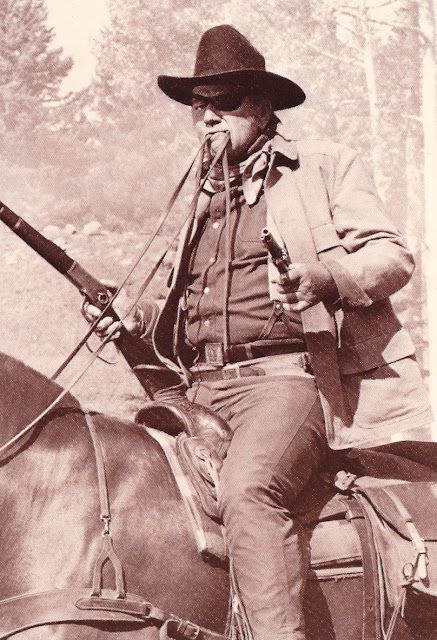I remember, not long ago, doing a training demonstration for the Assistant Chief of the Minneapolis Police Department, her Training Lieutenant, and the very seasoned Sergeant in charge of the MPD Tactical Team (used to be ERU when I kicked a few doors with them, don’t know what they call themselves now…). After going through a brief session (30 minutes) designed to help them recognize their own somatic markers in the presence of danger, the Sergeant made six out of six entries into a room where he was required to state, based on his monitoring of his somatic markers, where the “bad guy” inside the room was — before he entered.
He was right on six for six out of all entries.
What I remember most, with a mix of amusement and resignation, was his complete flabbergastment at his own performance. He didn’t want to believe what he’d just done, because by his (previous) belief system, what he had just done was impossible, and therefore was some kind of arcane trickery on my part.
I gave him a technical explanation, and his immediate pushback was: “Where’s the research?” My rebuttal was, “Did you just do it? Six times in a row? Do you need research to convince you that you just did what you did? And, by the way, we (me and my crew at Accentus) are DOING the latest research we just gifted you in an exercise.”
It took him awhile to sort it out, and when I saw him at a later date in his role as firearms instructor, he’d absorbed that experience, made it part of his reality map, and was passing on his own flavor to his students.
One of the reason’s I’ve always brought research up AFTER I do exercises that are designed to create immediate change in the brain is that most people who are on the cutting edge of doing, rather than blogging/YouTubing/blagging (similar to blogging, but more annoying) are immediately and justifiably skeptical about “research” unless you can show them, right there, right now, how it benefits them operationally.
Dude, I’m down with that approach.
Back in the old timey times, when 3-4 revolvers and a sawed off shotgun were the “operators” tools of choice, I immediately questioned all “research” with my default “Oh, bullshit, show me.” So I get it why some of my colleagues and clients and students don’t want to hear about research UNLESS you can demonstrate why they need to spend some of their very limited time on that.
As my good friend and colleague Ralph Mroz points out in this article (insert Mind’s Eye link) we’ve been about 20-30 years ahead of the “firearms/training industry research” pretty much forever.
So it’s very gratifying when the mainstream science community catches up with our applications. One of my many attorneys pointed out with some amusement, “Marcus, you’re in a unique position. You’ve been proving this stuff works on the street and the battlefield for 30 years…and you had to go back to the lab to prove that street results were real!”
Word, bro. Word. Good thing I’m scary patient by nature.
There’s been a slew of recent research studies that have come out recently that lend support to the controversial exercises I’ve developed, taught, and validated in very hard arenas all over the world.
Specifically we’ve developed a number of exercises designed to help operators more rapidly recognize (and act) upon their individual somatic markers (insert Wikipedia link Somatic Marker Hypothesis) in the presence of danger. Primarily this is focused on refining the sense of imminent danger from humans nearby (though we have validated it in the field at over 300 meters) and the response it elicits in humans who, these days, are more unaware than not of everything, especially subtle feelings in the body traditionally associated with emotions (hair standing up on the neck, sinking feeling in the stomach, etc. are examples).
This plays off our fundamental emphasis on the importance of preconscious processing as a foundational element in survival in the face of extreme stress and extreme danger.
In other words, we train the brain’s pattern recognition program to recognize its own signals faster and sooner so as to speed up the decision making process in fast breaking human on human conflict. To recognize danger early. To recognize the shift in another human from OBSERVATION to ATTENTION and then ATTENTION to INTENTION.
Kind of a useful skill, wouldn’t you agree?
We reliably, and repeatedly, train brains to recognize the precursors before the precursors that are normally taught as fight precursors, to recognize the subtle muscle pre-firing that occurs before conscious thought as long as 2-7 seconds before action. As one of the studies cited below indicates, they’ve demonstrated in the lab the ability to predict 14 seconds before conscious thought and action. We have some anecdotes of that time frame from the field, problem is that our guys either left the area or decisively killed their opponents before they got well into their action sequence.
So if you’re interested in the hard science behind the stuff we do, which has been for 30 years often dismissed as hoo-doo (though embraced by some of the very best in the world and utilized operationally right now in some of the hardest counter-terror environments in the world) skim through these recent science articles.
https://www.sciencenews.org/article/people-can-sense-earth-magnetic-field-brain-waves-suggest
How does the ability to respond and sense magnetic fields matter to the brain of a gunfighter?
BLUF*: The human organism generates an electromagnetic field from the heart and brain (see research at HeartMath, a DOD contractor and JSOC provider). At the preconscious level all humans feel variations in that field in other humans especially under stress or intention focused at another.
https://www.nature.com/articles/s41598-019-39813-y
How does the ability to decode imagery before “volitional engagement” matter to a brain of a gunfighter?
BLUF*: Human brains visualize in the visual cortex before taking action, working off pattern recognition fragments or whole patterns. This causes measurable change in the brain which in turn is reflected in EM activity which is detected by nearby human brains.
https://qz.com/1569158/neuroscientists-read-unconscious-brain-activity-to-predict-decisions/
How does the ability to read brain activity to predict decisions 11 seconds before people act matter to the brain of a gunfighter?
BLUF*: Uh, if a gunfighter can predict you 11 seconds in advance, even an ancient one eyed fat man like me could shoot you lots of times before you shoot me. Sorry — this is a more accessible and popular science explanation of the study above.
If you go back to the PDF of our peer reviewed research study published in THE JOURNAL OF CRIMINAL AND POLICE PSYCHOLOGY https://marcuswynne.wordpress.com/2018/08/29/a-major-milestone-for-accentus-ludus/ you’ll see reference to our somatic marker training. Still plenty of room to improve what we’re doing out in the field. And my brilliant research staff, when they’re not tutoring the Dalai Lama or treating PTSD with wolf therapy, will drive on with that mission.
Try it. You might save some lives, including your own.
*BLUF = Bottom Line Up Front
And while I rarely swagger around, thinking it unseemly in someone of my age, I’m going to post this video, because it captures how I’m feeling today. Thanks to my researchers, and the many hundreds of thousands of men and women out there who took this stuff on board to save their lives and many others, and thanks to God for gifting me with the ability to take this out into the world and save lives.
If you’re interested in this kind of stuff, please go here www.marcuswynne.com and sign up for my newsletter. While it’s right now focused on selling books, I’m in the process of creating a consolidated website and newsletter that covers all this stuff. Free, no spam.
From The One-Eyed Fat Man —


